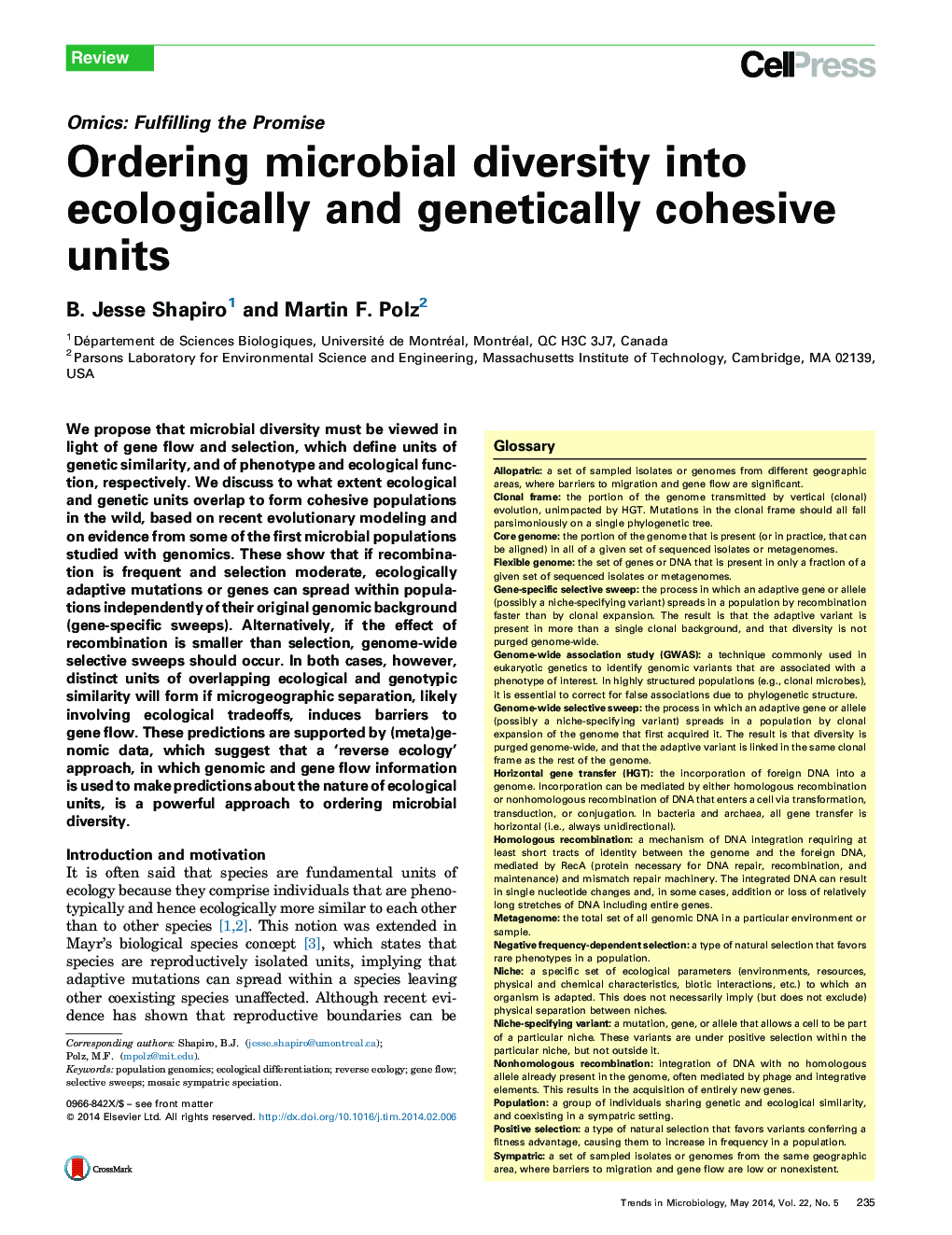| کد مقاله | کد نشریه | سال انتشار | مقاله انگلیسی | نسخه تمام متن |
|---|---|---|---|---|
| 3422113 | 1226722 | 2014 | 13 صفحه PDF | دانلود رایگان |
• Mathematical models and genomic data provide new insights into microbial speciation.
• Adaptive genes can either spread within populations or trigger genome-wide sweeps.
• Formation of new genotypic clusters in sympatry requires (microgeographic) gene flow barriers.
• If arisen in sympatry, genotypic clusters represent congruent ecological and genetic units.
We propose that microbial diversity must be viewed in light of gene flow and selection, which define units of genetic similarity, and of phenotype and ecological function, respectively. We discuss to what extent ecological and genetic units overlap to form cohesive populations in the wild, based on recent evolutionary modeling and on evidence from some of the first microbial populations studied with genomics. These show that if recombination is frequent and selection moderate, ecologically adaptive mutations or genes can spread within populations independently of their original genomic background (gene-specific sweeps). Alternatively, if the effect of recombination is smaller than selection, genome-wide selective sweeps should occur. In both cases, however, distinct units of overlapping ecological and genotypic similarity will form if microgeographic separation, likely involving ecological tradeoffs, induces barriers to gene flow. These predictions are supported by (meta)genomic data, which suggest that a ‘reverse ecology’ approach, in which genomic and gene flow information is used to make predictions about the nature of ecological units, is a powerful approach to ordering microbial diversity.
Journal: - Volume 22, Issue 5, May 2014, Pages 235–247
